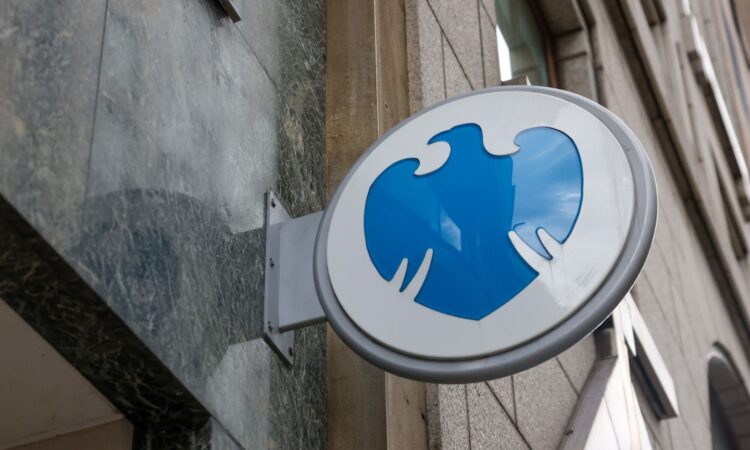
Barclays’s second-quarter results last Thursday didn’t paint a much worse picture than UK and European rivals in the areas where investors were most focused: margins on lending and losses on problem loans. But there is one area where it does look weaker than most peers — except for Deutsche Bank AG — and that is returning cash to shareholders.
Banking is often a complex and hard-to-predict business, but the one sure way to get investors past their qualms is to regularly hand out healthy dividends and share buybacks. Both Barclays and Deutsche Bank increased cash returns in the second quarter, but the amounts still lag the payouts from others.
Investors have been focused on the margins banks make on the difference between lending rates and funding costs because these have been boosted by rapid interest-rate rises. The question has increasingly become about when net interest margins will peak and even start to decline. Banks in the UK and across Europe have been able to hold off lifting the rates they pay to depositors for months because of the excess money from central banks still sloshing around the system.
Barclays, like Deutsche Bank and NatWest, said that net interest margins were likely to decline in the second half, but there was a positive slant to the story. Barclays cut its forecast for full-year margins in its UK business to about 3.15% from more than 3.2%. But the change was partly driven by borrowers repaying credit cards and mortgage debt or refinancing home loans early at affordable fixed rates. In the face of higher rates, customers are doing sensible things that make them less risky — Barclays said this should mean fewer losses on bad loans.
The bigger picture on net interest margins for these three and others that reported last week — Lloyds Banking Group, BNP Paribas SA in France, Banco Santander SA in Spain and UniCredit SpA in Italy — is that they are still going to be significantly better this year and next year than they were in 2019 before the Covid-19 pandemic led to a flood of central bank funding to support economies.
And the theme of low losses on lending is true across Europe too: Default rates remain at relatively low levels and are forecast to rise only slightly in the next couple of years. Several banks improved their outlooks for economic growth and unemployment this quarter, suggesting they expect a soft landing in the fight against inflation.
Barclays and Deutsche Bank stand out from rivals in having large global investment banks and trading businesses — although the more highly valued BNP has that too. Like many US rivals, Barclays and Deutsche Bank are trying to convince investors that these businesses are more stable and reliable than they think. Barclays, however, reported one of the biggest declines in bond-trading revenue among peers in the second quarter versus the same period last year: In dollar terms only Goldman Sachs Group Inc. was worse than Barclays. The UK bank’s equities-trading revenue also fell heavily, in line with Morgan Stanley and better than JPMorgan Chase & Co., but worse than everyone else.
Investors don’t like volatility and Barclays’s quarterly trading revenue is now more volatile than any US or European peer, according to Andrew Coombs, analyst at Citigroup.
Still, all investment banks’ revenue is volatile to some degree and yet Barclays and Deutsche Bank shares are less loved than many. Worse, Barclays trades at a greater discount to book value than its forecast return on equity suggests it should. Another way of saying this is that investors think Barclays has a much higher cost of equity than peers, even more than Deutsche Bank.
The bottom line is that BNP, Lloyds, and UniCredit have billions of excess capital to return to shareholders. NatWest is doing £1.8 billion of buybacks this year. Barclays added a £750 million buyback to the £500 million it completed in the first half, while Deutsche Bank launched only its second buyback in years with a €450 million plan.
Both banks are trying to become more efficient and hope to lift their payouts over time: Deutsche Bank has pledged to return €8 billion in dividends and buybacks by 2026. Investors just aren’t buying it yet from either bank.
More From Bloomberg Opinion:
• A Crisis Tailor-Made for JPMorgan and Its Peers: Paul J. Davies
• Home Loan Banks Are Adrift and Asking for Trouble: Editorial
• Savers Are Profiting in a New World for Banks: Marc Rubinstein
This column does not necessarily reflect the opinion of the editorial board or Bloomberg LP and its owners.
Paul J. Davies is a Bloomberg Opinion columnist covering banking and finance. Previously, he was a reporter for the Wall Street Journal and the Financial Times.
More stories like this are available on bloomberg.com/opinion





